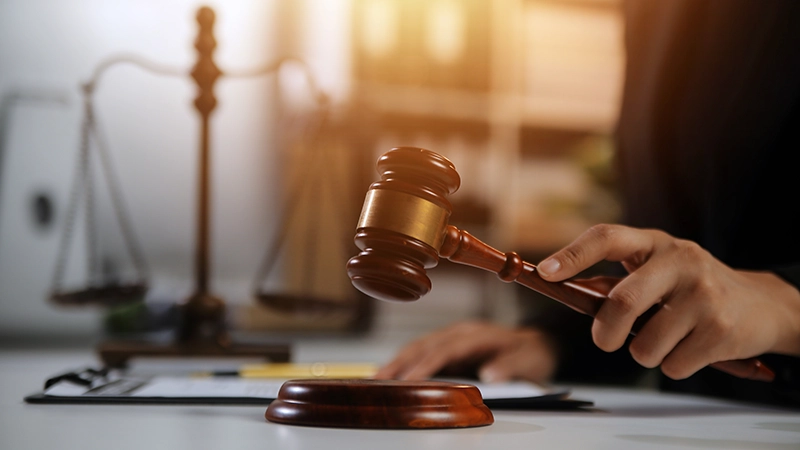One of the first questions any client asks at the outset of a personal injury case is, “How long will it take?” The answer, which may cause some alarm, is often “it depends.”
But even if you’ll never be able to pin down a guarantee that your claim will be resolved in a specific number of days or weeks, a few factors can impact how long it will take to resolve a personal injury claim.
And the good news is that your claim could settle at any time – you may not ever reach all the steps outlined below.
In this article, we discuss some of the elements that can speed or slow a personal injury claim, how long each stage may take, and what you should be able to expect throughout the process.
Step 1: Seeking Medical Treatment
Timeline: 0 to 2 weeks
The most important step to take after an injury is to seek medical treatment – regardless of whether you intend to file a personal injury lawsuit.
Not all injuries are immediately apparent after an accident, and failing to be promptly treated could make these hidden injuries worse. If you don’t see a doctor until weeks or months have passed since your accident, it will be tougher to connect the accident to your injuries.
What’s more, the defendant, their insurance provider, and the trial court may assume that this delay in evaluation means that your injuries weren’t significant.
Step 2: Scheduling a Consultation With a Personal Injury Attorney
Timeline: 0 to 2 weeks
Just as it’s important to see a doctor during the days after an accident, setting up a consultation with a personal injury attorney during this time can improve the odds of a successful claim.
Often, the most crucial evidence that can be obtained in a personal injury lawsuit is often the most fleeting. By engaging an attorney early, your counsel will be able to begin investigating the case, gathering evidence, taking photos of the scene (and your injuries), and building your case against the at-fault party.
Generally, it’s a good idea to consult a personal injury attorney whenever your injuries:
- Cause you to miss more than a couple of days of work
- Cause recurring health problems
- Involve anything more serious than scrapes or bruises
- Have led you to incur $1,000 or more in medical bills
In these situations, you may be able to recover financial damages that include lost wages, medical expenses, future medical costs, and any loss of earning potential.
Step 3: Investigating & Reviewing Your Personal Injury Claim
Timeline: 4 to 8 weeks
During a consultation with a personal injury attorney, your attorney will conduct an intake exam that asks you about what happened during the accident, what injuries you’ve sustained, how these injuries have impacted your life, and what your medical treatment plan looks like. This will help your attorney begin building your case.
Next, your attorney will ask you to sign some medical release forms so they can access your medical records and medical bills to continue building your case. This process can vary based on the speed with which the medical providers respond to access requests.
In some cases, an attorney may need to submit multiple records requests to gain access to the documents they need.
Step 4: Making Demands & Negotiations
Timeline: 2 to 4 weeks (or longer if maximum medical improvement hasn’t been reached)
Although you may assume that hiring a personal injury lawyer means you’ll be filing an injury lawsuit, this isn’t always the case. Many injury claims settle before trial, and many more settle even before a lawsuit has been filed. At Breit Biniazan, our attorneys treat every case as if it will go to trial, only considering a settlement if it is the right option for the case.
If your attorney thinks your case has a good chance of settling – which can help avoid the time, expense, and hassle of a personal injury trial – he or she may begin negotiating with the other parties in advance of filing a lawsuit.
If these negotiations reveal a gap between what each side considers the claim to be worth, a lawsuit may be the only way to move the case forward.
However, there’s one main caveat.
If you’re still seeking treatment for your injuries or haven’t yet reached maximum medical improvement (MMI) – the point at which your medical condition has improved as much as it ever will – attempting to settle your claim may be premature. After all, it’s tough to assess how much your case is worth if you’re not yet sure what future medical expenses you’ll incur. Only after you reach MMI should your attorney begin negotiating and preparing to file an injury lawsuit.
Step 5: Filing a Personal Injury Lawsuit
Timeline: Less than 2 years from the date of the injury
Under Virginia law, an injured plaintiff has a two-year statute of limitations in which to file a personal injury claim. This means that if a plaintiff doesn’t file a personal injury lawsuit within two years of their injury, the claim may be time-barred and dismissed.
In some cases where an injury isn’t immediately apparent, the limitations period doesn’t start until the plaintiff discovers (or reasonably should have discovered) the injury. The sooner you seek medical treatment and consult an attorney, the sooner your lawsuit is likely to be filed.
Although your attorney may engage in some pre-lawsuit negotiations to see whether a fair settlement can be achieved without going to court, filing a claim is often the best way to move the case toward its ultimate resolution.
Step 6: The Discovery Phase
Timeline: 26 to 52 weeks
Once a lawsuit has been filed, all parties gain the ability to seek documents and information from the opposing party (or parties) in a process known as “discovery.”
During the discovery phase, your attorney will issue interrogatories (or written questions), requests for admission, and requests for document production to determine what legal defenses the other side may assert and how you can best fight against them.
Often, the trial court will set deadlines for the discovery phase, but these deadlines can usually be extended as long as both parties are acting in good faith – that is, not attempting to delay or sandbag the case.
In general, the discovery phase can last anywhere from six months to a year or longer. Some of the factors that impact the speed of this process include:
- The complexity of the case, as more complex cases generally require more discovery;
- The number of other parties involved;
- Whether there are other plaintiffs who also have been injured by the defendant(s); and
- The level of cooperation displayed by each party.
Simple cases with a single defendant tend to have shorter discovery periods, while complex cases involving multiple defendants (or multiple plaintiffs) are likely to take longer.
Step 7: Engaging in Negotiations
Timeline: 2 to 4 weeks (or longer)
Once the discovery process begins wrapping up and the strengths and weaknesses of each side’s claims become clearer, the attorneys will begin to discuss settlement again.
Preparing for a trial can be time-consuming and expensive. Some law firms operate under the philosophy that unless a defendant believes they have a strong chance of winning, it may be in the defendant’s best interest to settle for an agreed-on amount rather than rolling the dice of a trial. At Breit Biniazan, we carefully analyze all factors of a case and assume that going to trial will be the best outcome for the client. A settlement is not considered unless it meets the threshold of what our attorneys feel could be reached at trial.
In some cases, the trial court may order the parties to mediate before it will schedule a trial. Parties can also agree to pursue mediation on their own. If mediation fails, then the case will proceed to the final step, a personal injury trial.
Step 8: Conducting a Personal Injury Trial
Timeline: less than 1 to 2 weeks (or longer)
Some trials may last less than a day. Others can span weeks or may be continued and rescheduled for later in the month. And because many cases tend to settle just before trial, courts often double-book (or triple-book) trial dates under the assumption that not all cases will still be pending by the time the trial date rolls around.
This means that your initial trial date may be “congested” to a later date if the court has scheduled another case for trial on that day. This is just a function of scheduling. It’s not a reflection on the strength of your claim or the judge’s assessment of your case.
Other Factors That Can Influence the Speed of Your Trial
The process laid out above only provides general guidelines. The speed with which a particular case will be resolved will depend on a variety of factors unique to the case.
Some of these include:
Extensive Medical Treatments
If you require certain medical treatments to reach MMI, or if you’re unlikely to reach MMI before the statute of limitations expires, your claim may take longer to resolve than a claim where total damages can be more readily assessed.
High-Value Claims
Insurance is a volume business, which means that it’s often in an insurance company’s best interest to quickly settle a relatively small claim so that it can move on and focus its efforts on other claims and clients.
But for cases involving catastrophic injuries – or cases that are likely to result in six- or seven-figure damages awards – the insurance company may have a vested interest in dragging the case out, hoping that this delay will encourage you to settle. Your attorney will fight back against these delay tactics, but high-value claims tend to take longer to litigate than lower-value ones.
Claims Involving Complex Legal/Factual Issues
Complex claims and those with many moving parts (such as a large number of lay witnesses) tend to take longer to settle than simpler claims.
Not only will the discovery process take longer due to the larger volume of evidence that must be gathered, but it may take longer to arrange everyone’s schedules for trial (especially if an initial trial date is continued).
Breit Biniazan’s Personal Injury Attorneys
Navigating a personal injury claim can be time-consuming and emotionally draining – it’s a process you simply don’t want to undertake on your own. The personal injury attorneys at Breit Biniazan have extensive experience in all aspects of personal injury litigation and will focus on maximizing your financial recovery while you focus on healing.
If you or a loved one has been injured due to someone else’s negligence, contact Breit Biniazan today by calling (855) 659-4457 to discuss your case.




